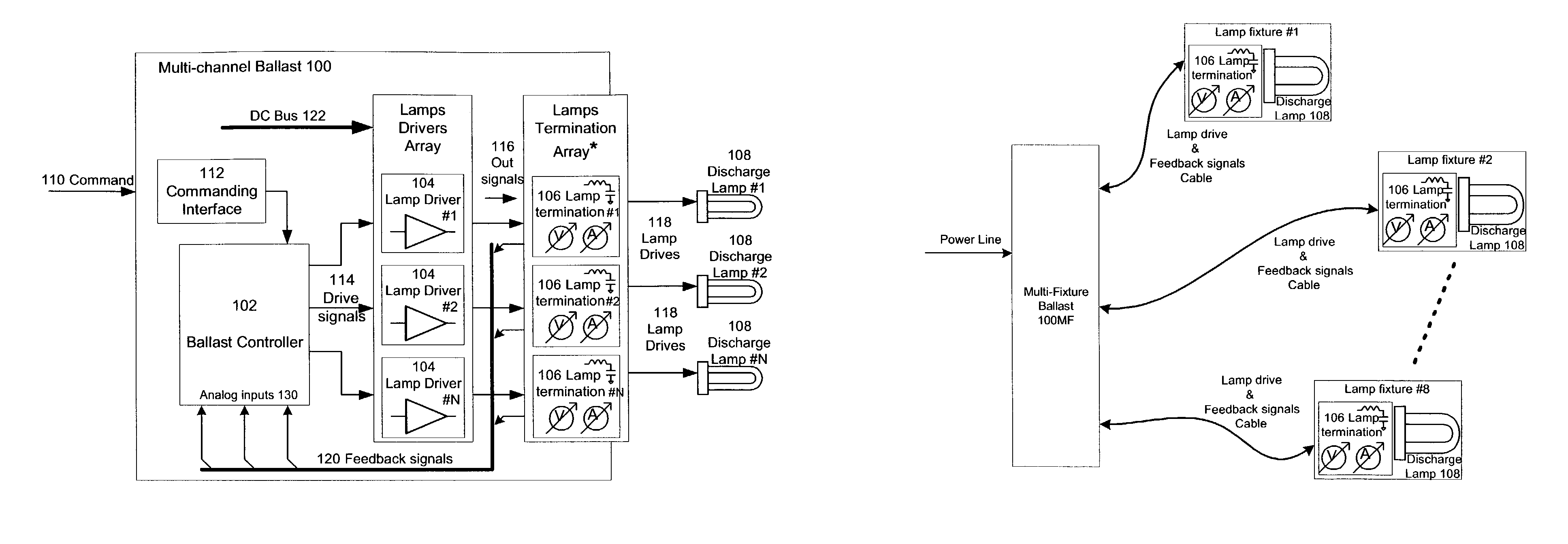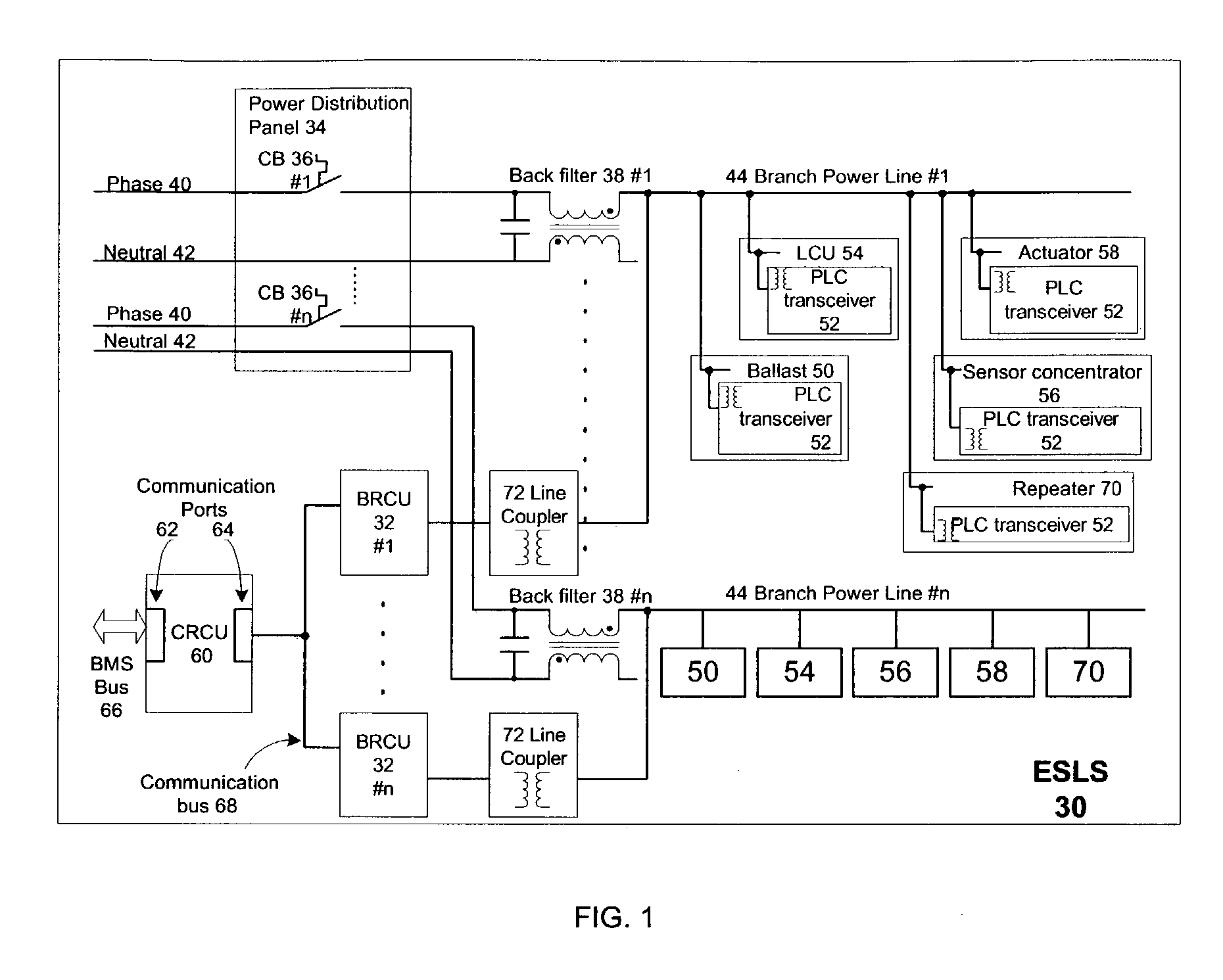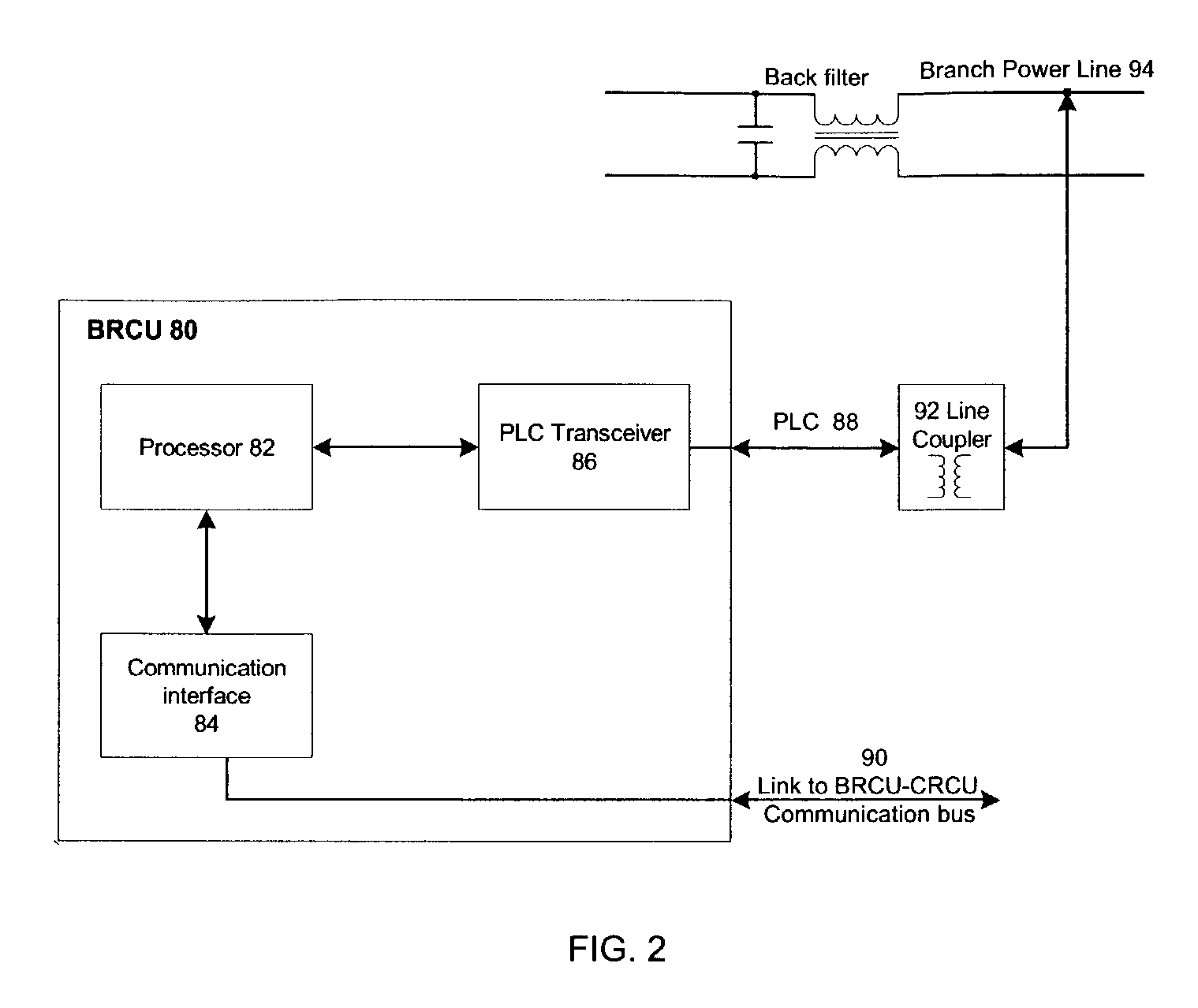Multiple channel ballast and networkable topology and system including power line carrier applications
a multi-channel ballast and networkable topology technology, applied in the field of multi-channel ballast and networkable topology and system including power line carrier applications, can solve the problems of inability to provide adequate and cost effective solutions in the existing plc communication system, and inability to meet the needs of lighting equipment, etc., to achieve the effect of extending the lamp life, ensuring safety, and ensuring the safety of equipmen
- Summary
- Abstract
- Description
- Claims
- Application Information
AI Technical Summary
Benefits of technology
Problems solved by technology
Method used
Image
Examples
application example
MLB 4 lamps True Parallel MLDEB Features
Brief Description
[0174]One Ballast drives 4 Lamps connected in true parallel[0175]Each lamp of the fixture can be remotely commanded On & Off[0176]Each Lamp is PLC addressable[0177]Each Lamp can be switched On or Off individually over the entire dimming range[0178]Stand-by power consumption, lamps off, typical 0.5–0.7 W[0179]Low THD (see previous Electrical Data Table)[0180]Low flicker (see previous Electrical Data Table)[0181]Complete PLC Modem, receives commands, transmits acknowledge and reports ballast and lamps status.[0182]Short Time to Market—Ballast designed for four T8 32W lamps. Using the PDK tool the ballast can be easily adapted to operate all linear and compact fluorescent lamps in the range of 17–42 W without compromising performance[0183]Startup behavior[0184]1. Practically no Glow currents at preheat: [0185]2. Starts up at any desirable light level: −1% to 100% without flash[0186]3. Start up at last light level—the ballast rem...
PUM
 Login to View More
Login to View More Abstract
Description
Claims
Application Information
 Login to View More
Login to View More - R&D
- Intellectual Property
- Life Sciences
- Materials
- Tech Scout
- Unparalleled Data Quality
- Higher Quality Content
- 60% Fewer Hallucinations
Browse by: Latest US Patents, China's latest patents, Technical Efficacy Thesaurus, Application Domain, Technology Topic, Popular Technical Reports.
© 2025 PatSnap. All rights reserved.Legal|Privacy policy|Modern Slavery Act Transparency Statement|Sitemap|About US| Contact US: help@patsnap.com



